The idea that in farming we are really exploiting the land is quite correct. Indeed, we cannot help doing so. With all that we send out into the world from our farms, we are taking forces away from the earth – nay, even from the air. These forces must somehow be restored
Rudolf Steiner, Lecture 5, The Agriculture Course
Introduction
(1.1) There are nine core biodynamic preparations, that are used to improve soil health and help heal the earth. The farmer’s/growers relationship with the farm/garden is also strengthened through the making, and use of the biodynamic preparations.
Through the preparations, we move beyond ‘ingrained onlooker consciousness’ ( i, John Soper, 1976), and participate with the farm organism with our whole body and our inner forces. This is contrary to most conventional farms where there is no requirement for farmers to create a personal relationship with their farm individuality, instead, there is a press-button technology (Manfred Klett, 1994, pg16.)
The post-Zarathustra farmer-to-farm relationship is set to become even more abstract as conventional farms become farmerless. (Agriculture Farming 4.0, The Future Of Farming Technology, 2018) In this sense the biodynamic preparations are themselves a technology, working in the living sphere of the farm organism (Manfred Klett, 1994, pg18), and can be used to counter the materialistic narrative.
Beyond the core biodynamic preparations (500-508) indicated by Rudolf Steiner in Lecture 4 and Lecture 5 of The Agriculture Course, a handful of biodynamic practitioners around the world have developed their own preparations and practices, such as the Three Kings Preparation, CCP, Sequential Spraying, and 500XP, which I will address in part three.
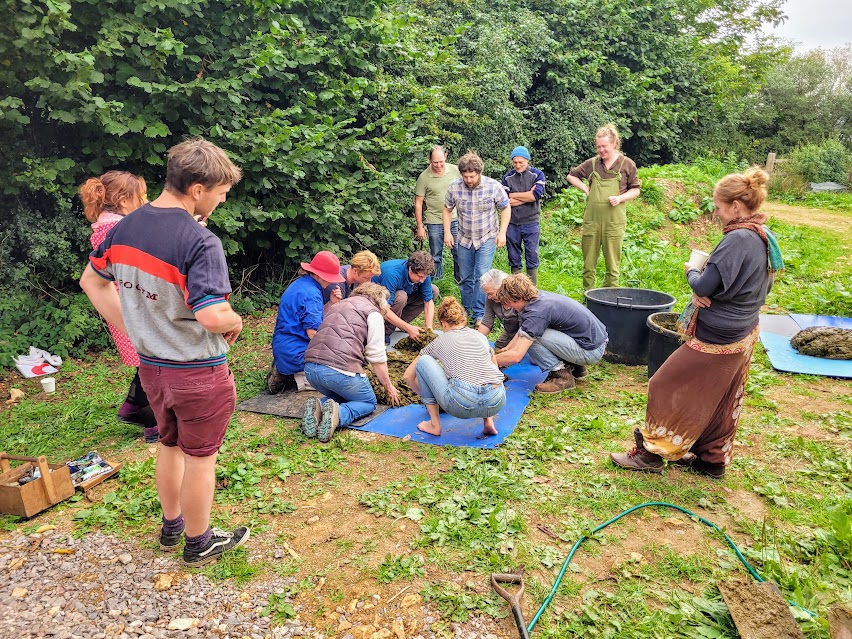
During the preparations weekend at Ruskin Mill, there was a general discussion about whether different countries around the world could use native plants to make compost preparations over the eurocentric plants mentioned in the agriculture lectures. It was explained by Briony Young during the weekend, that the six compost preparations are finely balanced with each other, and it would be difficult to find a suitable substitute holding the same characteristics. Steiner mentions that for the Stinging Nettle preparation you will “scarcely find another plant to replace it” if it cannot be found then you must b
However, beyond the compost preparations, I think there are many preparations to be discovered, preparations with the characteristics to aid imbalances on our individual farms. Throughout the agriculture course, and in the anthroposophy lectures that I have read, Steiner consistently emphasises the importance of doing our own research and developing further upon his ideas. I have always understood that there may be more biodynamic preparations to be discovered.
Nearly a hundred years ago Rudolf Steiner gave Eight Lectures on Agriculture as organic farming practices were being replaced by modern technology. This trend accelerated further after the second world war, as chemical farming became widespread (ii). Steiner understood that the fertilisers and chemicals that were being used caused the soil to become deaf (iii, page 162, Agriculture Course), and it is the task of preparations to restore all of the senses within the soil. He believed that the preparations should be sprayed over the whole earth.
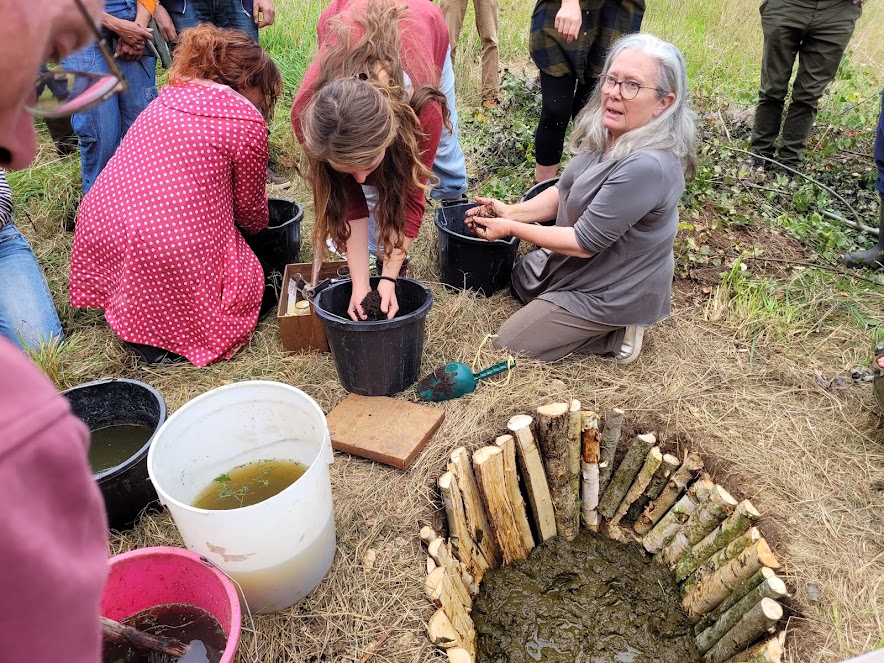
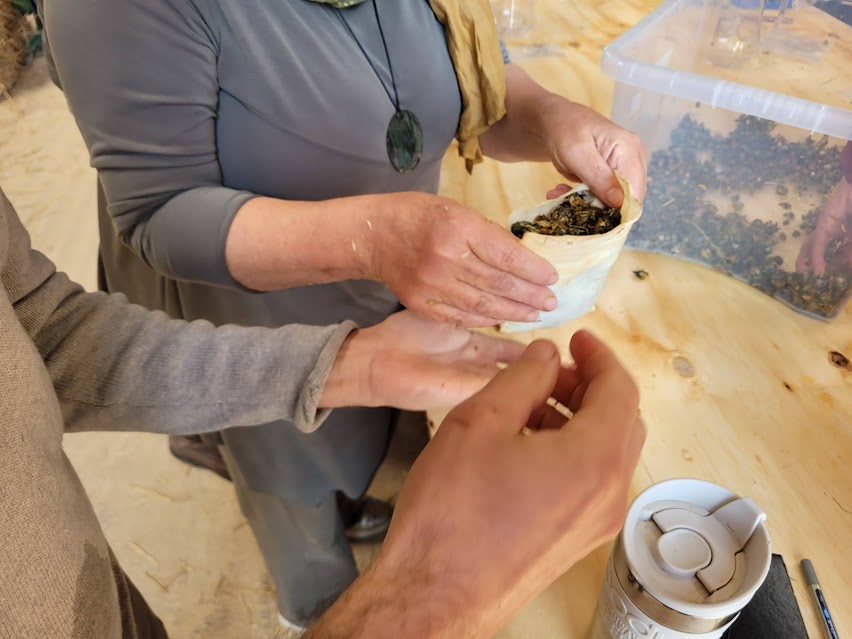

The Nine Core Preparations 500 – 508 Indicated By Rudolf Steiner
| Biodynamic Preparation | Source | Quality | Application | ||
| 500 Cow Horn Manure | Fresh cow manure, and cow horns | Enhances the life of the soil | Spray | ||
| 501 Cow Horn Silica | Clear quartz (Silicon dioxide) triturated into a fine powder | Increases plant immunity, crystallising effect which helps to ripen and protect seed | Spray | ||
| 502 Yarrow | Flowers of Yarrow (Achilea millefolium) | Helps the soil draw in substances, support structure, heals wounds. | Added to Compost | ||
| 503 Camomile | Flowers of Camomile (Matricaria chamomila) | Helps to stabilise plant nutrients and invigorate plant growth, and calm the chaos within the compost. | Added to Compost | ||
| 504 Stinging Nettle | Whole Stinging Nettle (Urtica dioica) | Develops sensitivity in the soil, and helps to stabilise nitrogen | Added to Compost | ||
| 505 Oak Bark | Oak Bark (Quercus robur) | Helps increase a plant’s resistance to disease, increases flocculation so the compost doesn’t become anaerobic. | Added to Compost | ||
| 506 Dandelion | Flowers of Dandelion (Taraxacum offcinale) | Activities light influences in the soul | Added to Compost | ||
| 507 Valerian | Flowers of Valerian (Valeriana officinalis) | Protection, temperature regualtion | Sprayed over Compost | ||
| 508 Horsetail | Flowers of Horsetail (Equisetum arvense) | Prevents fungal diseases, and balances the water elements | Spray |
My Experience Of The Stirring Processes
The Six Compost Preparations Relation To The Planets And Human Body
(1.2) The compost preparations each have their own inherent qualities and work symbiotically to exponentially increase their potency of revitalising the soil. Each compost preparation also relates to an organ and planet.
| Compost Preparation | Planet | Organ |
| 502 Yarrow | Venus | Kidneys |
| 503 Camomile | Mercury | Lungs |
| 504 Stinging Nettle | Mars | Heart |
| 505 Oak Bark | Moon | Reproductive |
| 506 Dandelion | Jupiter | Liver |
| 507 Valerian | Saturn | Spleen |

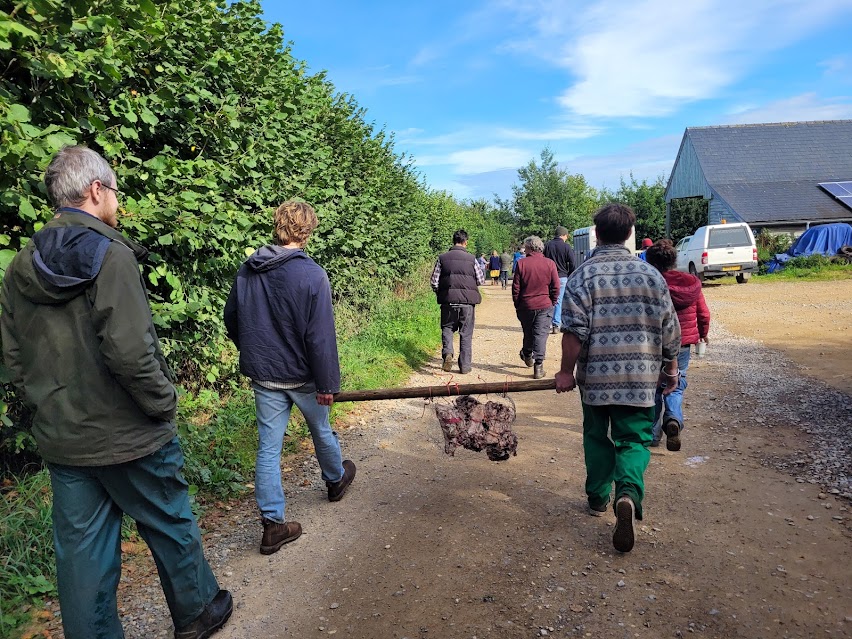
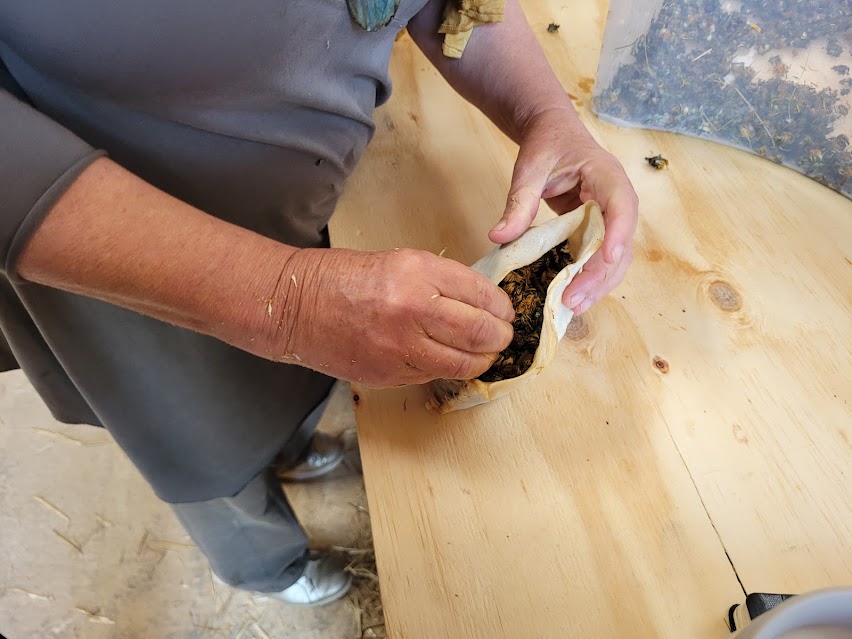
The Animal Sheaths Serving The Transformation Of Substance
Animal organs are used as sheaths, to aid the composting process of the herbs. The organs are not treated, in order to retain qualities that once served the bodily function of the animal. The organ helps the preparations to mature.
| Preparation | The Animal Sheath |
| 500 | Cow manure is stuffed into a Cow Horn |
| 501 | Groud up silica is stuffed into a Cow Horn |
| 502 | Yarrow is filled into a Stag Bladder (The yarrow structure reflects that of stag antlers) |
| 503 | Chamomile flowers are stuffed into a Cows Intestine |
| 504 | Buried in the ground surrounded by clay tiles (Steiner related nettles with the heart) |
| 505 | Oakbark is filled into the Skull of a Domestic Animal |
| 506 | Dandelion flowers are put into a Cows Mesentery |
| 507 | Valerian is added to water. Due to its qualities, I believe it could be associated with Blood. |
Biodynamic Preparations Video
(2.1, 2.2) I had originally planned on making a video about the biodynamic preparations. I started it with video clips, and photographs from my first year working with biodynamics. My hope was to add to the video while gaining knowledge and content on the preparations. However, I lost all of the original footage, and all I have is an incomplete video. Please note that some of the preparations in this video are labelled incorrectly.
Important Notes
Before moving onto the specifics of each biodynamic preparation, it is important to mention that these are homoeopathic remedies, and are to be used in conjunction with good biodynamic/organic farming practices. To make an example Cow Horn Manure 500 is referred to by Steiner as “spiritual manure” it should be used alongside “ordinary manuring” (TAC pg75)
Also, we should come to understand the preparations as forces, not substances. In the case of 500 & 501, the transformed manure, and transformed silica is diluted and stirred in a barrel of water. Steiner said during the discussions/questions following lecture 4 (where 500 & 501 are indicated) “as a result of the concentration and subsequent dilution, it is only the radiant effect that works: it is no longer the substances as such, but the dynamic radiant activity” (TAC, pg79)
The Spray Preparations
There are three spray preparations indicated in the Agriculture Lectures. There is an interesting polarity between 500 Cow Horn Manure and 501 Cow Horn Silica which I will explain further down. The third spray preparation 508 Equisetum is used to treat fungal issues on the farm, but some practitioners will use it on more occasions. Horsetail is the most referred to plant throughout The Agriculture Course, so it may be a more significant preparation than we are first led to believe.
All of the spray preparations are potentized by stirring in water for 1 hour. A barrel is filled with water, and the preparation is applied. A besom is used to stir the water starting from the edge and moving inwards to create a vortex. Then the practitioner moves the besom in the opposite direction to create chaos, before returning to a vortex.
One must still have chaos in oneself to be able to give birth to a dancing star.
Fredrich Nietsche – Thus Spoke Zarathustra
500 Cow Horn Manure
“You see, by burying the horn with its filling of manure, we preserve in the horn the forces it was accustomed to exert within the cow itself, namely the property of raying back whatever is life-giving and astral. Through the fact that it is outwardly surrounded by the earth, all the radiations that tend to etherealise and astralise are poured into the inner hollow of the horn. And the manure inside the horn is inwardly quickened with these forces, which thus gather up and attract from the surrounding earth all that is ethereal and life-giving.
And so, throughout the winter — in the season when the Earth is most alive — the entire content of the horn becomes inwardly alive. For the Earth is most inwardly alive in winter-time. All that is living is stored up in this manure. Thus in the content of the horn, we get a highly concentrated, life-giving manuring force.”

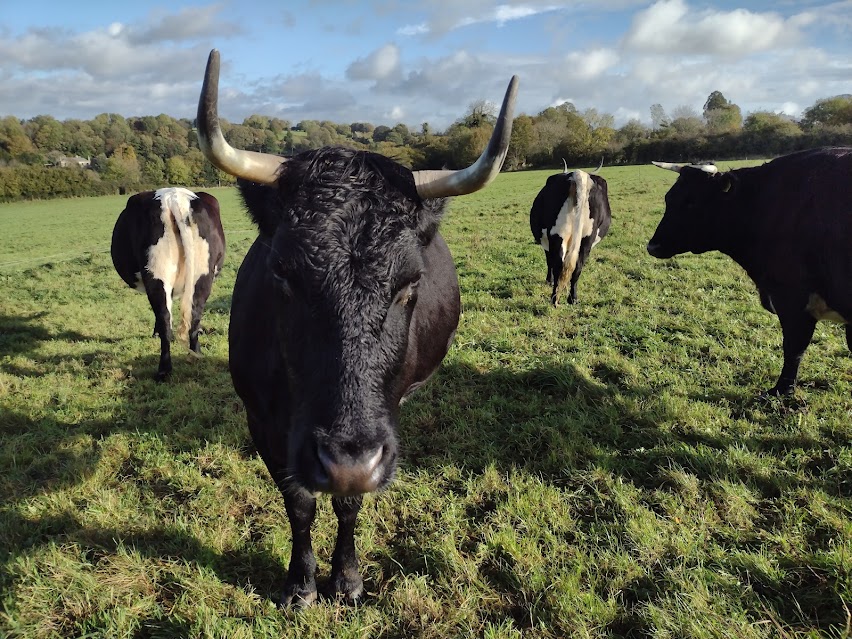

How To Make Cow Horn Manure 500?
In Autumn, you will need to collect cow manure, ideally from a lactating cow, and from as nearby as possible. Then fill cow horns with the collected manure, pressing to ensure there are no gaps.
After the horns are filled they are buried in the ground, between 45-75cm deep. Ensure there’s oil in contact with the whole surface of each horn and place the opening of the horn downwards, so it doesn’t become too wet.
The horns are then collected in Spring, six months later. But you can leave the horns in the ground if you intend to use them later in the year.
The transformed manure is then taken out of the horn and stirred rhythmically for one hour, in a vortex of chaos, and order. One horn worth of transformed manure can be parted with 20 litres of water, when started this could cover 1 square kilometre.
When To Spray Cow Horn Manure 500?
(3.1) The 500 Cow Horn Manure Preparation is sprayed directly onto the soil prior to sowing. It is also sprayed on grassland.
For one acre of only 1 gram of transformed horn manure is needed.
Why Cow Horns?
There is a polarity between the cow horns and the cow manure. The horns are situated on top of the skull of the cow, being the highest point of a cow. A cow is not born with horns, they form sometime after the cow is born and starts to graze, it is a gift of the earth. (Manfred Klett, pg23) The development of horns is closely related to the development of the whole digestive system.
The cow horns are filled with blood, if you hold the horn of a cow you will feel the warmth. The rhythms of respiration and pulse penetrate right into the hollow of the horn. A horn of a bull consists of sponge bone, without blood vessels. The cow’s horns are a sensory organ, that allows her to look inwardly and hear her own digestion. A cow with horns has her awareness focused inwards, this is seen in the cow’s disposition, it is why cows show little awareness of the happenings around them. A cow rests and contemplates. The horns contain a concentration of all the different systems active in the cow’s organism (Manfred Klett, pg247)
Manfred Klett in his book juxtaposes the horns of a cow, with those of the devil he says “The devil can be looked at as being the opposite of a cow. Whatever he perceives in the world he is eager to keep for himself”.
Dehorned cows are less potent, through losing their horns they have lost their inner activity, all of the forces stream out from them. The cow manure contains the forces that in human beings we would use to generate self-consciousness, this is what the cow releases, it is her gift to the earth. (BDAA, 2000.) By putting the manure in the horn and burying it in the ground during winter, the energies released through metabolism will go back into the manure.
501 Cow Horn Silica
How To Make Cow Horn Silica 501?
You can use quartz, or feldspar, it’s important that the mineral contains upwards of 98% Silica.
The silica mineral is collected around Eastertime and ground into a very fine powder. Water is added to give it a creamy consistency, it’s then poured into the horn.
Once the mineral has solidified the opening can be sealed with damp soil.
You can now bury the silica-filled horns in the soil during spring and dig them up in winter (in polarity to BD500). You take a little bit of the contents and stir it rhythmically for one hour, the highly diluted liquid is then sprayed on the land.
When To Spray Cow Horn Silica 501?
Cow Horn Silica 501 is to be sprayed following the application of the Cow Horn Manure 500. The preparation has a crystallizing effect on plants, and therefore it is used during phases of the plant’s development. In George Corrin’s Handbook, he writes “apply the spray… when that part of the plant is developing which will later be harvested” (George Corrin, 2004, pg80)
Why Silica?
During the biodynamic preparations weekend, I remember the silica preparation being described as refracting the light and capturing/observing the state of the plant. This reminded me of Indra’s web in Vedic cosmology “Indra’s net has a multifaceted jewel at each vertex, and each jewel is reflected in all of the other jewels.”
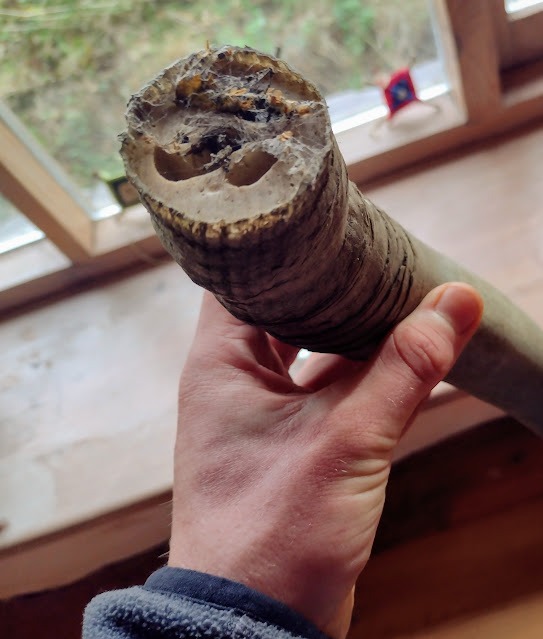


508 Horsetail
Horsetail is the plant that is mentioned the most during the agricultural course, although through my research it seems that it is commonly left out by biodynamic practitioners. It is a spray preparation and is not used in the compost.
How To Make Horsetail 508?
A tea is made from Equisetum arvense. Collect the plant on a sunny day before midsummer, in late June. Spread the plants out in the shade to dry out.
Bring to a boil 20g of dried horsetail with two litres of water (preferably rain or spring water), then simmer for half an hour with the lid on, before letting it stand for 24 hours.
Strain the tea, and dilute it with more water to make it 4.5 litres.
Then stir for 15 minutes, in a similar fashion to the horn preparations.
When To Spray Horsetail 508?
The preparation counteracts the tendency towards fungal development. Horsetail 508 is sprayed in a mist on the leaves of the plant and also on the soil. The best time to spray is during humid, and changeable weather conditions when fungus development is likely to occur. Interval spraying is used fortnightly to counter fungus on very susceptible species.
The Compost Preparations
502 Yarrow
In no other plant do the nature-spirits attain such perfection in the use of sulphur as they do with yarrow
Rudolf Steiner, Lecture 5, The Agricultural Course
The ancients called Yarrow the eyebrow of venus, due to its delicate leaves which contrast with its woody stem.
The bladder of a stag is used as the sheath for this preparation. The flower-bearing stems display a form echoing stag antlers. A stag’s nature is focused outward, in contrast to a cow’s inward processes. This is reflected in the antlers, and alertness that allows the stag to detect subtle movements in his environment, and respond on a dime.
How To Make Yarrow 502?
Collect Yarrow Flowers as soon as all of the flowers in the cluster have opened, between June & August.
Dry out the flowers, and cut off any remaining stalks from the florets. Store in a dry place until Spring.
In Spring, spray the dried Yarrow, with juice taken from freshly pressed Yarrow. This is done to moisten the flowers.
The flowers are then stuffed into a stag bladder. You may want to soak the bladder beforehand to make it easier to stitch. The yarrow can be pressed into the bladder with a wooden spoon. The bladder returns to a spherical form when stuffed.
Find a tree in a sunny place, and hand the stuffed stag bladder there. Cut off any remaining fat from the stag bladder as this will attract birds.
In Autumn, bring the yarrow-stuffed stag bladder down, and bury it in the ground in a similar fashion to the cow horn preparations. In horticulture, we covered the stag bladder with chicken wire to prevent pests from getting to it.
In Spring dig up the preparation with care, as only a fragment of the sheath may remain.
503 Chamomile
Chamomile assimilates calcium…which can cheifly help to exclude from the plant those harmful effects of fructification
Rudolf Steiner, Lecture 5, The Agricultural Course
How To Make Chamolime 503?
Towards the end of May Collect the flower heads of German Chamomile (Matricaria chamomilla) on a sunny morning when the flowers are open. Similarly, to Yarrow 502, you will need to dry the flower heads for use in the Autumn.
In September, dampen the dried flower heads with tea made from fresh chamomile plants. Then stuff the camomile into a cow’s intestine. The idea is to make sausage-like parcels that are 20cm – 40cm in length.
When tieing off the sausages include a loop, as they will need to be hung to dry for a few days.
The Chamomile 503 preparation will be buried to the same depth and at a similar time to the Yarrow 502 preparation.
You may consider using two earthenware pots to enclose and protect the preparation from pests.
In the following spring carefully dig up the sausages, and remove the transformed chamomile so it can dry.
504 Stinging Nettles
The stinging nettle is a regular “Jack-of-all-trades.” It can do very, very much
Rudolf Steiner, Lecture 5, The Agricultural Course
How To Make Stinging Nettles 504?
The sheath for the stinging nettles is the earth.
Gather stinging nettles during their first stage of flowering. You can use a scythe to cut them early in the morning, so they will have wilted by the afternoon.
Dig a pit to the same dimensions as indicated for the other preparations. Add a layer of peat to the base and sides of the pit. Then place the wilted nettles inside the pit, and cover them. It is recommended to be generous with the quality of nettle plants, as they will break down considerably over the year.
The nettles are then dug up a year later and is crumbled further. The same pit can then be used to make the preparation for the following year.
505 Oak Bark
To have a healing effect, the calcium must remain within the realm of life
Rudolf Steiner, Lecture 5, The Agricultural Course
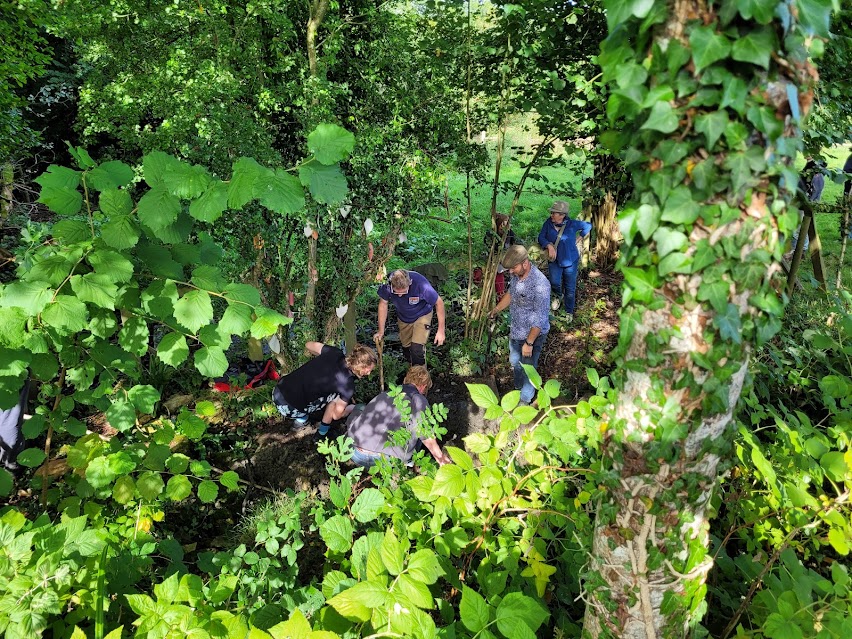

How To Make Oak Bark 505?
At the end of summer take the outer bark from an English Oak (Quercus robur), that is over 30 years of age, and has a trunk diameter of greater than 30cm.
The bark is put inside the skull of a domestic animal, in the place where the brain would have been.
The domestic animal could be a cow, sheep, goat, pig, or horse. Break up the oak bark into small crumbs and stuff it into the cranial cavity.
The brain will have to be removed this can be done with a power hose. If possible try to leave the membrane that lines the skull.
The skull is then placed in a wooden barrel or pit water topped with plant material, and water. It should be in a location that will receive a run of water over the next six months.
In Spring at the end of April and beginning of May, scrap the transformed Oak Bark from the skull, splitting the skull is necessary.
506 Dandelion
The innocent yellow dandelion!…Meditates between the silicic acid…homeopathically distributed in the cosmos, and that which is needed as silicic acid throughout the given district of the earth
Rudolf Steiner, Lecture 5, The Agricultural Course
How To Make Dandelion 506?
Collect the flower heads on a sunny day in early Spring. They should be shaped in a cone, not opened completely. As flower heads fully open may continue to seed in later stages of preparation.
Let the flowers wilt in the sun for several hours, then dry in the shade.
Soak the dried flower heads in water or fresh dandelion tea, and stuff them into pre-made pockets made from a mesentery, made from two sheets 20cm-35cm sowed together. You should be able to fit 5-6 handfuls of danelion flowers inside.
Dry the dandelion stuffed mesentery for a couple of days before burying
Place the mesentery pillows in a pit, to the same dimensions as the other preparations.
Dig up the preparation six months later, and collect the transformed dandelion.
507 Valerian
You have one more river to cross…add this diluted juice of Valerian flower to the manure
Rudolf Steiner, Lecture 5, The Agricultural Course
How To Make Valerian 507?
Collect clusters of Valerian flowers early in the morning. Grind and press them to extract the juice. Place the extract in a glass bottle with a rubber top, and allow it to ferment. After a month and a half, you can seal the bottle properly, as much of the fermenting process will have taken place.
The bottle should be kept in a dark shaded place.
The liquid should become brownish-red like that of coffee. The valerian liquid can store for many years.
Storing The Biodynamic Preparations
As a biodynamic practitioner, it’s important to have a set of biodynamic preparations that you can access when required. If they are stored correctly, then they should still hold vitality for many years. You have to process all of the preparations and store them in a container, for example, if the Cow Horn Manure 500 preparation remains in the ground for too long then the soil organisms will eventually digest the substance until nothing remains.
The Cow Horn Silica Preparation 501 can be kept in a glass jar when it has dried out.
The compost preparations are best kept in clay pots, with lids. They are then placed into a purpose-built wooden box, that is insulted with peat. This is done, as peat is a natural insulator and should help protect the preparations from outside influences such as radiation and electricity which many people believe could degrade the potency of the substances.

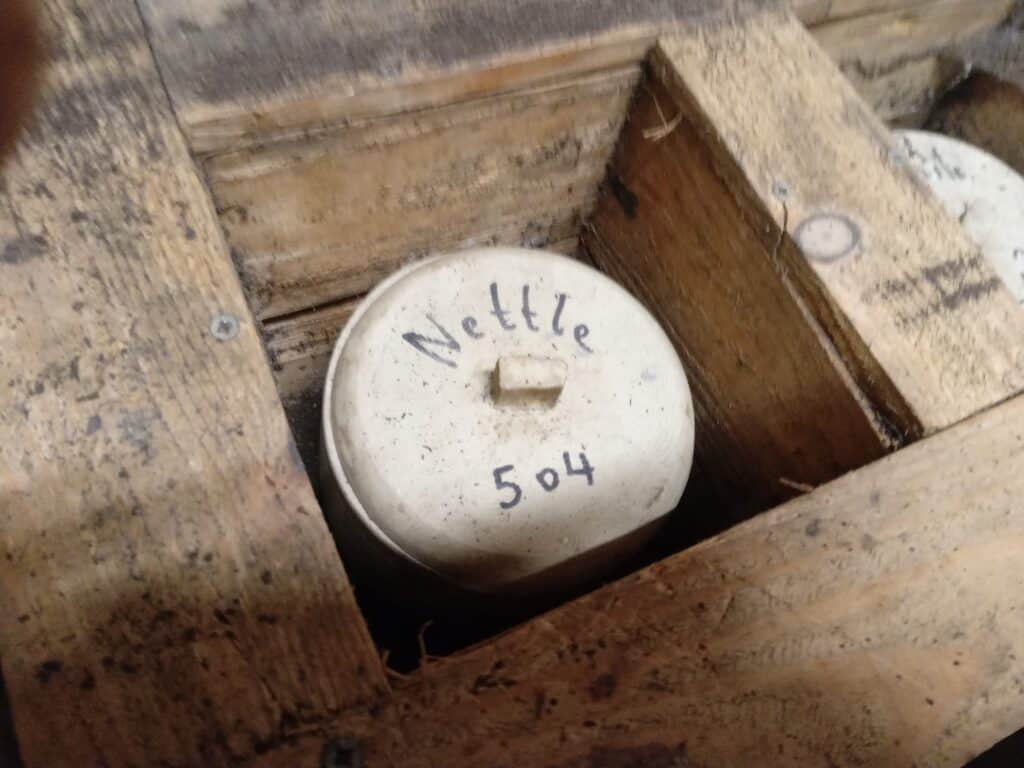
In the Valley I have been working on a preparation stirring area, this project has been held back, as I am waiting on materials. Once it is complete, I hope to have a small cupboard built into the clay bank, with a dry stone wall built across it. In the stone wall, there will be a small wooden door, with a lock. Here I want to store a wooden peat-filled preparation box. It would be nice to have the preparation stored in the landscape and also next to where the stirrings take place.
References
i. Three Kings Preparation – PDF -biodynamic.org.uk – Read Here
ii Synthetic Pesticide – University Of Calafornia San Diago – http://www.bt.ucsd.edu/synthetic_pesticide.html
(iii) Deaf Soil – Agriculture Course – Rudolf Steiner Press – 2004 – REPORT OF A CONVERSATION BETWEEN DR. STEINER
AND DR. STREICHER – Page 162
“These things should be considered in connection with the manuring question as a whole. Otherwise you are reduced to the most abstract principles, where for example you get acids formed in the soil, and you then ask: “How can I counteract them?” and on these lines, in course of time, you absolutely kill the soil for plant growth. You make it deaf.
Dr. Streicher: The farmers too have a feeling that the soil is extracted and impoverished by the use of artificial manures.
Dr. Steiner: It is not at all a bad expression; it makes the soil deaf. On the other hand, one must not fall into the extreme of using plant-manure. It must be admitted that plant-manure is not favourable to plant-growth. In point of fact, the only ideal manure is cattle-manure — not plant-manure.”
Rudolf Steiner, Lecture 5, The Agricultural Course
Recent Posts
From my experiences with biodynamic agriculture, as I now enter into my fourth year of being on biodynamic farms and gardens, I have to say I find this a difficult question to answer because it’s...
Part One - Honey Bee Species: Mellifera, Cerana, Dorsata, and Florea
Introduction I am halfway through a traditional beekeeping course as part of my deep dive into beekeeping over the last year. It is a standardised beekeeping course, that you find in most towns...
